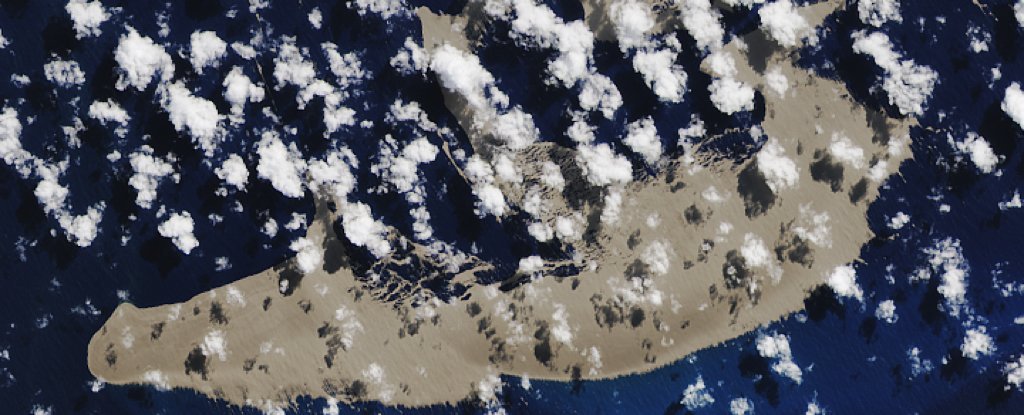Bigger Than 20,000 Football Pitches: Raft of Volcanic Rock Is Floating Towards Australia

Much to scientists’ delight and sailors’ surprise, there is a massive floating raft of volcanic rock heading toward the Australian coast. The formation is believed to have originated when an underwater volcano erupted near Tonga in the Pacific Ocean.
The raft is said to be the size of more than 20,000 football fields and is about 6 inches thick. Those who have seen it say it’s bigger than the mind can imagine and the eye can see. Some have even said it appears to be as big as the city of Manhattan.
The formation was first spotted via satellite on August 9th, 2019. The NASA Terra Satellite spotted the formation and reported it. It was about this time that sailors in the Pacific started seeing the strange sight. Those aboard the Australian adventure catamaran called ROAM reported seeing the massive floating rock and said it covered the entire water’s surface.
The raft of volcanic rock was so thick, they couldn’t see any water at all. In fact, they said it was difficult to navigate through the sludge. They reported seeing pieces of matter as small as marbles and as large as basketballs.
Some have compared the formation to what would happen if an ocean-sized soda bottle was shaken up and then opened. The explosion and the foam that erupts from the bottle will eventually cool down and turn into a sudsy material. This is how they describe the floating raft.
Sailor Shannon Lenz was the first to post footage of this floating raft on YouTube. He said the rock he sailed through was anywhere from 6 to 8 inches thick, and like sailing through pumice. Scientists estimate that there are about 1 trillion pieces of pumice floating in the Pacific right now.
An interesting thing about this floating raft of volcanic rock is that it is a hazard for sailors; however, scientists are fascinated by the formation. Their hope is that it will continue to pick up marine organisms as it makes its way toward the Great Barrier Reef off the coast of Australia.
A raft of rock, the size of 20,000 football fields is floating towards Queensland. The pumice was created when an underwater volcano erupted off Tonga. Scientists say it’ll bring millions of new coral to the Great Barrier Reef. @ErinEdwards7 @QUT #7NEWS pic.twitter.com/W7pKdowYw2
— 7NEWS Gold Coast (@7NewsGoldCoast) August 24, 2019
Scott Bryan, a Queensland University of Technology geologist, and colleagues have studied 3 volcanic rafts since 2001. He reports that the rafts all carried an amazing variety of life – each a miniature ecosystem. Corals are part of those systems, and if even .1 percent of those reach the Great Barrier Reef, they might provide millions of new corals and give the reef a much needed coral population boost.
The Great Barrier Reef, along with most reefs on the planet, is in desperate need of replenishing. Much of the damage to the reefs is due to anthropogenic heating; the biggest culprit, scientists say, is greenhouse gas emissions.
Another problem is that the waters near the Great Barrier Reef are much warmer and much more acidic than they used to be. The corals start to die, changing from a bright, vivid color to that of bleached out white or gray.
While there is a need to correct the issues causing the decimation of these reefs, in the meantime, the best we can do is replenish them. The hope is that, as it travels toward the Australian coast, this slow-moving mass, like the others Bryan studied, will pick up hitchhikers like algae, barnacles, corals, and other forms of marine life that can catch a ride to the Great Barrier Reef.
Currently, the formation is expected to travel through New Caledonia and Vanuatu and may go as far as the Coral Sea. The closer it gets to the Great Barrier Reef, the better.
It isn’t until later this year that coral spawning takes place in the Great Barrier Reef. If the timing is right, this new floating ecosystem can go a long way toward replenishing this valuable area.
Another Article From Us: Investment Sought for $6 Million Cloning Centre For Mammoths
However, while these masses of volcanic rock pumice do eventually absorb too much water and sink, some have been known to last for months or even years.
